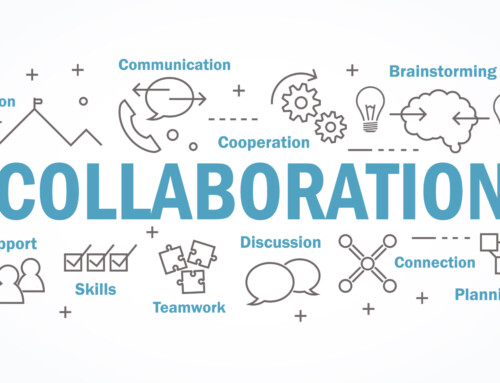I have been thinking about these two tools—context and conversation—intently for more than five years, primarily when observing the repercussions of a digitally transforming world. The focus of my thoughts—how both context and conversation are simple to provide, cost nothing, and can go far toward impacting the outcomes of change initiatives. Let’s start with context.
Where Has All the Context Gone?
Developments in connectivity, technology, Big Data, the Internet of Things, etc. are amazing and appear in our world on a daily basis. As we move primarily to digitally driven communication and a 140-character world, what do we lose at the same time that we are gaining connection? The Cambridge English Dictionary defines context as “the influences and events related to a particular event or situation.”
It appears to me that the more connected we get and the more our world is chopped into bits and bytes, the less context we have for actually understanding that world and its daily challenges. This consequence is an even greater concern as change cycles intensify in our organizations.
Second only to the question, “How will this change impact me?” is the question, “Why are we doing this?” Translation: “What is the context for this change?” The change context should be prominently available in the business case. Providing that information to your stakeholders should be a priority during the initiative.
Digital communication modes abound in workplaces, especially among personnel under 50. However, at the same time we can send a Tweet or a text communicating some aspect of a change, we are not able to use these channels effectively to provide the economic, business and company-specific reasons for the change. No number of successive Tweets will ever be able to provide the contextual information necessary to effectively communicate to stakeholders, as their work life is goes into a tailspin.
I agree wholeheartedly with Stephen Bradley when he commented on the importance of context when addressing web design: “Context is everything. It shapes the meaning in all communication.”
For the recipients of change, their place and role in the organization is at the core of their context for the change. Members of the change leadership and change management teams should be prepared, not only with the elevator version of why, but the ability to provide in-depth responses related to the specific questions stakeholders are asking.
In fact, it is important that change leaders and sponsors get a true understanding of the context from which their stakeholders perceive. Often politics and power can overshadow how employees experience the realities of fast-moving or simultaneous change initiatives.
A Little More Conversation, Please
A recent college visit with my niece who was being recruited for both her academics and soccer prowess brought to a head my concern for the state of conversation. It appears to have gone the way of the love letter—it takes too long, is way too personal, and only seems to work in the movies. But honest, authentic, and engaging face-to-face conversation is worth reinstating, as it can be a very valuable tool during organizational change.
Even though there are messaging plans and communication outreach events during large-scale change, a successful change is often catalyzed by conversation. Don’t let planning, tracking, and intranet tools substitute for authentic communication. There are some environments in which a change manager or change leader has to build a consensus for action conversation by conversation—colleges and universities being especially typical of this need.
Most college faculty and top officials are not persuaded by a mass communication on benefits or impact. They can be informed but first their specific academic milieu needs to be personally acknowledged. Find the individuals with the most negative body language at a communication event, or note those who don’t attend at all and then find a way to have a personal conversation with each person.
If it seems overwhelming or that there are too many people to address one-to-one, then pull a small number of like-minded individuals together or go to your change agent group and divide and conquer to not only communicate the message, but to help people process its reality.
And the conversation may have to start by acknowledging the context of the receiving individual. What is your current understanding of this change? How do you see the change impacting you/your organization? What would make this change be more appealing to you?
Despite the fact that she holds an endowed Chair at one of the most prominent technical universities in the world, Sherry Turkle, current director of Massachusetts Institute of Technology’s Initiative on Technology and Self, addresses the issues arising from a lack of conversation in her book, Reclaiming Conversation: The Power of Talk in a Digital Age.
Turkle relates the results of a number of studies done by Ben Waber at the MIT Media Lab, in which he uses a tool called a “sociometric badge.” “To sum up a number of studies, face-to-face conversation leads to higher productivity and is also associated with reduced stress … The “conversation effect” doesn’t work the same way for online encounters. What matters is being together face-to-face…”
Supported by the impression that this is when they are doing their “real work,” many employees feel justified in avoiding face-to-face conversation. And because they avoid it, they don’t understand what it can accomplish. Leadership can break this cycle. Fortunately, those who would lead a culture of conversation in the workplace now have research on their side.”
Change is complex.
But it is also full of nuance that requires both context and conversation to be effective. Ensuring that context is the start of every communication goes a long way in ensuring that stakeholders are involved and employees, especially, are engaged.
Even if you are interacting with a virtual work team, it is important to build in short phone calls or video calls to have a conversation with people about their questions; if they don’t have any, you need to start asking some to ensure that the business change rationale has become part of their day-to-day context at work.
What have you found to be the perils of digital-only communication during change? How important is context to you? Do you have your own stories about the power of conversation?




